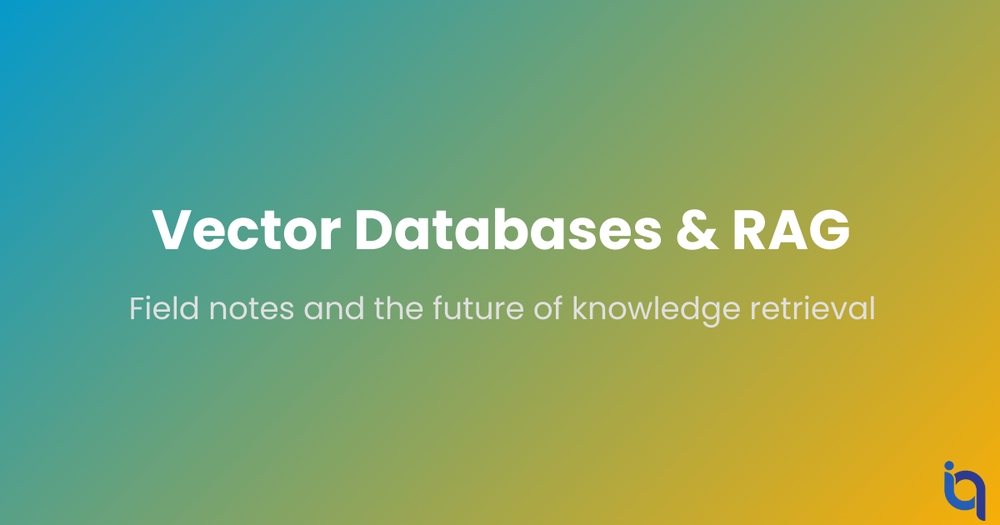• 2 min read
Vector Databases, RAG, and the Future of Knowledge Retrieval
A deep dive into retrieval-augmented generation (RAG), vector databases, and the future of knowledge access.

Introduction
Retrieval-Augmented Generation (RAG) has become the default strategy for grounding LLMs with external knowledge. Vector databases (VDBs) are the infrastructure enabling semantic search at scale. This post explores how RAG works, the state of vector databases, evaluation, and future trends.

Why RAG Matters
LLMs are powerful but limited by context windows and knowledge cutoff dates. RAG extends their power by retrieving relevant documents at query time. This improves:
- Accuracy (fewer hallucinations).
- Freshness (up-to-date knowledge).
- Efficiency (smaller models can leverage external knowledge).
Architectures of RAG
- Naive RAG: retrieve top-k documents and stuff into prompt.
- Multi-hop RAG: iterative retrieval with reasoning steps.
- Graph RAG (Microsoft, 2024): build knowledge graphs on top of embeddings.
- Adaptive RAG: adjust retrieval depth based on query complexity.
Vector Database Landscape
Open Source
- FAISS (Facebook AI, 2017): standard for similarity search.
- Milvus/Zilliz: distributed, cloud-native.
- Weaviate: hybrid search + semantic filters.
Commercial
- Pinecone: managed cloud service.
- Qdrant Cloud: Rust-based, efficient.
- Elastic Search + Vectors: extensions of classic infra.

Evaluation Benchmarks
- BEIR (Thakur et al., 2021): 18 tasks across domains.
- MTEB (Muennighoff et al., 2022): multilingual evaluation.
- LoCo (Google, 2024): long-context retrieval tasks.
Engineering Challenges
- Index updates: frequent embeddings can be costly.
- Embedding drift: changing embedding models causes silent degradation.
- Latency vs recall: trade-offs in approximate nearest neighbor search.
- Costs: some managed DBs charge heavily for storage + queries.
Best Practices
- Use hybrid search (BM25 + embeddings).
- Shard indexes by domain.
- Monitor retrieval quality (not just latency).
- Separate hot vs cold storage.
Sources
- Johnson et al. (2017). FAISS: A Library for Efficient Similarity Search.
- Thakur et al. (2021). BEIR Benchmark.
- Muennighoff et al. (2022). MTEB Benchmark.
- Microsoft Research (2024). Graph RAG.
- Pinecone (2024). Scaling Vector Search.
- Weaviate Docs (2024). Hybrid Search.